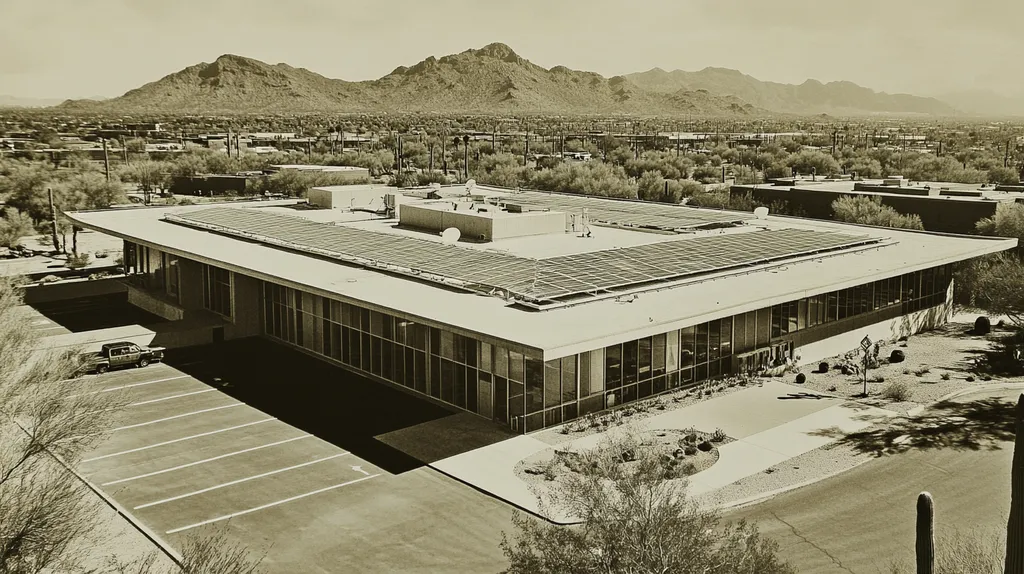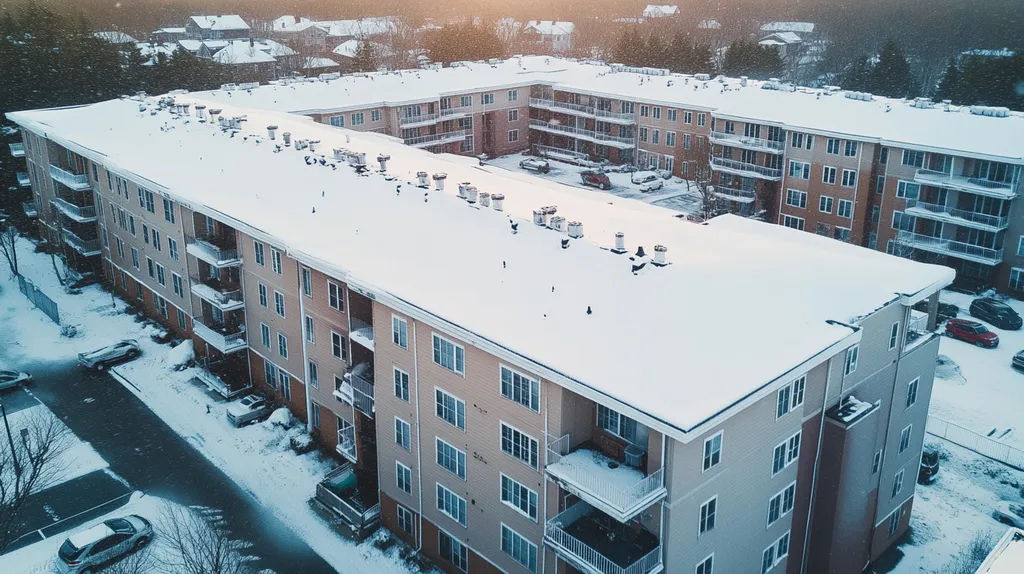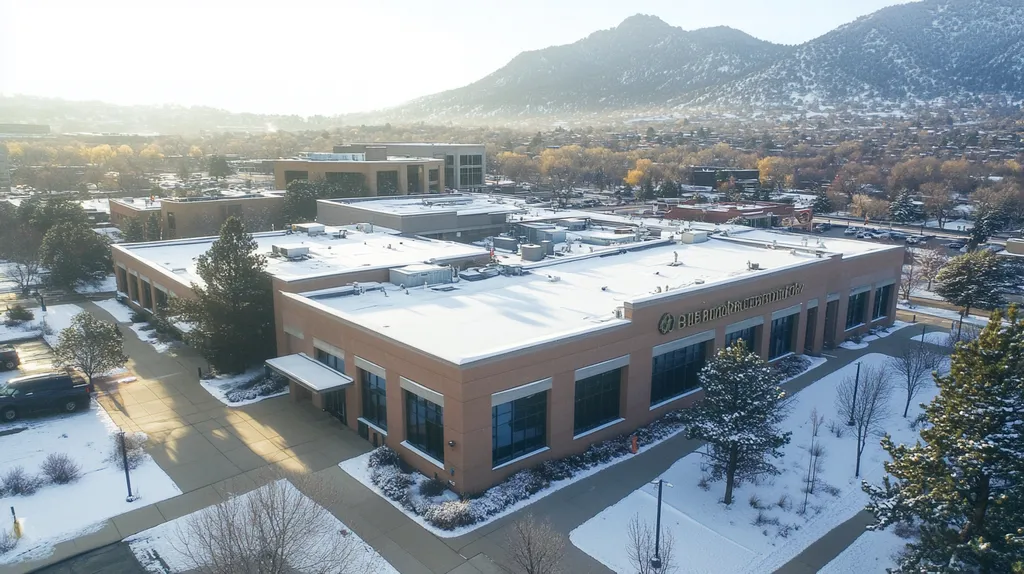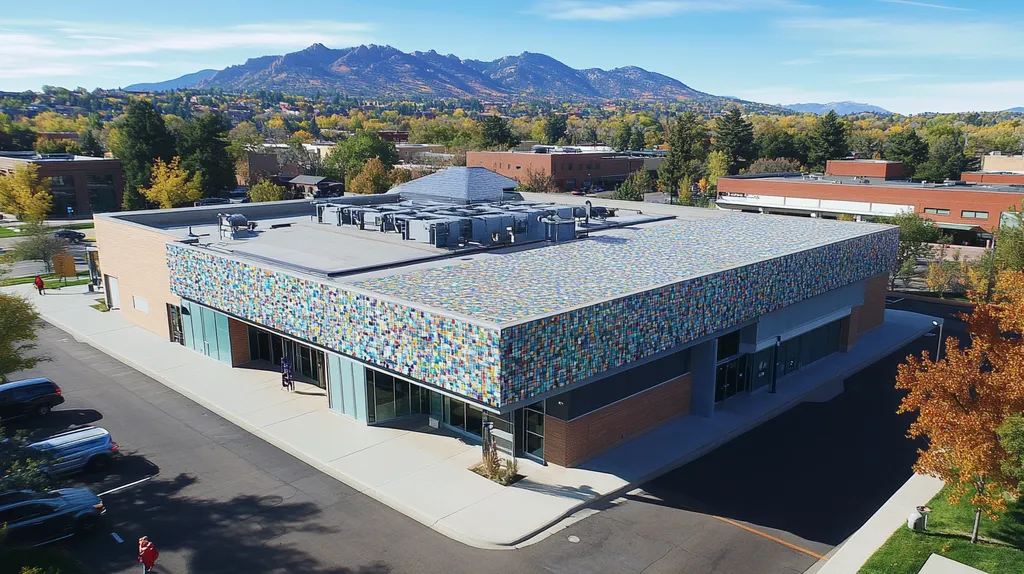Inadequate lighting system inspections on industrial roofs contribute to over 20% of workplace accidents and can double energy costs, according to the National Safety Council. For facility managers and property owners, understanding proper inspection protocols is not just about maintenance—it’s about protecting lives and assets.
From electrical safety standards to integration with existing roof systems, a comprehensive approach to lighting inspection can prevent costly failures while ensuring optimal performance.
This guide explores the critical components, implementation methods, and maintenance requirements that facility managers need to master for safer, more efficient industrial lighting systems.
SECTION 1: FUNDAMENTAL CONCEPTS
Inspecting lighting systems on industrial roofs is not just a checklist task; it is a vital practice for ensuring safety and optimizing energy efficiency. The National Fire Protection Association (NFPA) reveals that inadequate maintenance of lighting can contribute significantly to workplace accidents. Property owners and facility managers must familiarize themselves with various lighting system types, adhere to crucial electrical standards, and assess how these systems integrate with their roofing to prevent costly interruptions and enhance overall facility safety.
Understanding Lighting System Types
Industrial roofs host a variety of lighting systems, including LED, fluorescent, and high-intensity discharge (HID) lights. Each type offers distinct benefits and challenges. For example, LED systems are celebrated for their energy efficiency and durability, yet some versions contain hazardous materials like mercury that require careful disposal.
Facility managers must weigh these factors when selecting a lighting system that meets their operational needs. The decision goes beyond initial costs; energy efficiency plays a critical role in managing long-term expenses. A well-chosen system can not only boost productivity but also reduce energy waste, contributing positively to both the business’s bottom line and the environment.
Maintenance requirements also vary by system type. Regular inspections are essential to catch potential issues early, ensuring that the lighting systems perform effectively. Well-maintained lighting not only enhances visibility but also contributes to a safer workplace.
Furthermore, installation planners should carefully evaluate how different lighting systems align with the existing roof structures. Considering factors such as the weight and heat output of the lighting can have significant implications for roof longevity and safety.
Electrical and Safety Standards
Adhering to electrical and safety regulations is imperative for any lighting installation on industrial roofs. The National Electrical Code (NEC) sets forth guidelines that help mitigate hazards such as electric shocks and fires. Non-compliance can result in serious legal risks and insurance complications.
Property owners must also be aware of local building codes, which dictate specific installation practices. Understanding these regulations is crucial for maintaining safety and compliance. Regular inspections must confirm that lighting systems meet current safety standards and regulations.
Moreover, it is vital to grasp the implications of electrical load. Improper installations that overload circuits can create substantial safety risks. Consulting with electrical professionals during both planning and inspection phases is an essential step in mitigating these hazards.
Additionally, regular training for maintenance teams on safety regulations reinforces adherence to standards. This proactive stance can significantly reduce risks associated with faulty installations or maintenance oversights.
Roof Compatibility and Integration
The compatibility of roofing systems with lighting installations is paramount for sustaining both efficiency and safety. Not all roofs are suitable for every type of lighting system, and choosing the wrong fit can negatively impact both the lighting and the roof’s integrity. Some lighting systems generate heat that can compromise roofing materials if installed without proper insulation.
A comprehensive evaluation of the roof’s structure and materials is essential before integrating any lighting system. Some installations may necessitate reinforcements to safely accommodate their weight. For example, a PVC roofing membrane may not be compatible with fixtures that emit excessive heat.
Furthermore, the design and layout of the lighting system should carefully consider the roof’s drainage patterns. Incorrect placement can lead to water accumulation, escalating the risk of leaks that can damage both the lighting infrastructure and the roof itself.
Lastly, collaboration with roofing professionals is crucial when planning lighting integrations. Such cooperation ensures that both systems work harmoniously, thereby preventing future maintenance challenges and maximizing operational efficiency.
SECTION 2: SYSTEM COMPONENTS
Inspecting lighting systems on industrial roofs goes far beyond just ensuring visibility; it’s critical for safety, energy efficiency, and overall productivity. In fact, poorly functioning lighting can lead to workplace accidents and reduced operational efficiency. Remarkably, the U.S. Department of Energy states that well-lit environments can boost employee productivity by up to 20%. Thus, understanding the key components of these systems is essential to maintaining a safe and efficient facility.
Lighting Fixtures and Mounting Systems
Lighting fixtures form the core of any industrial lighting system. They come in various types, including LED, fluorescent, and high-intensity discharge (HID) lights, each designed for specific areas such as high bay spaces or focused tasks. Proper mounting of these fixtures is vital to ensure both safety and functionality.
Mounting systems need to be sturdy enough to endure environmental stresses like wind and heavy snow. Improperly installed fixtures can become dislodged, presenting hazards for workers below. Therefore, regular inspections should prioritize the security and maintenance of these mounting systems.
The strategic placement of fixtures significantly impacts lighting coverage. Careful positioning minimizes shadows and overly bright spots, which enhances visibility throughout the workspace. Ensuring that each fixture operates effectively can greatly contribute to a safer and more efficient work environment.
In conclusion, comprehensive inspections of lighting fixtures and their mounting systems are essential. Facility managers should confirm that all components are securely installed, properly placed, and fully functional to mitigate risks related to inadequate illumination.
Wiring and Electrical Connections
The wiring and electrical connections in an industrial lighting system are critical for reliable operation, yet they are often overlooked. Damaged or exposed wires pose serious safety risks, including electrical fires and outages. Regular inspections must include checking wiring for signs of wear, corrosion, and proper insulation.
Additionally, electrical connections must remain secure and compliant with local regulations. Loose or degraded connections can cause flickering lights or complete outages, which disrupt operations. Facility managers should prioritize verifying the integrity of all connections and promptly replacing any malfunctioning components.
Environmental factors, such as humidity and temperature changes, can also impact wiring integrity. It’s essential for facility managers to be vigilant for signs of deterioration, particularly in challenging roofing environments. Taking a proactive approach to wiring inspections can significantly reduce costly downtime.
In summary, thorough examination of wiring and electrical connections is vital for safety and reliability. Ensuring these elements are in good condition will enhance lighting performance and support optimal productivity within the industrial setting.
Control and Automation Systems
Control and automation systems are instrumental in maximizing the efficiency of industrial lighting. These systems can adjust brightness based on occupancy or ambient light conditions, resulting in reduced energy costs. However, like any other system, they require consistent maintenance to function effectively.
Facility managers should regularly inspect control panels and sensors to confirm they are working properly. Malfunctioning sensors can cause lights to remain on when they’re unnecessary, leading to wasted energy and increased costs. Routine testing of these systems can dramatically prevent such waste.
Moreover, proper integration of these systems with building management systems (BMS) is crucial for streamlining control across various operational aspects. An upgrade in software or hardware that connects these systems can significantly enhance their functionality.
In conclusion, maintaining effective control and automation systems is key to managing costs and improving operational efficiency. Facility managers must routinely inspect these systems to ensure they are responsive and well-integrated, ultimately contributing to better lighting management across industrial spaces.
SECTION 3: IMPLEMENTATION METHODS
Implementing lighting systems on industrial roofs demands meticulous planning and execution to avoid costly setbacks and ensure safety. A pre-installation roof assessment is crucial to identify potential concerns, such as structural weaknesses or moisture issues, which could endanger the integrity of the final installation. Oversights made in this early phase can lead to significant repair costs and safety hazards down the line. This section outlines key practices for successful and secure implementation.
Pre-Installation Roof Assessment
A comprehensive pre-installation roof assessment is essential for any lighting project to ensure a sustainable setup. This process should involve thoroughly inspecting the roof structure for signs of degradation, water infiltration, or other damage that could hinder the proper installation of the lighting systems. Addressing these issues before installation can save time and resources in the future.
Evaluating the existing electrical infrastructure is also critical. Understanding the current wiring setup and its load capacities helps select fixtures that are compatible and mitigates potential electrical hazards. Adequate documentation of these conditions serves as a reference during future maintenance or inspections.
Furthermore, a review of local building codes and compliance regulations is vital, as it can prevent unexpected delays and penalties after installation. Keeping organized records of this assessment ensures clarity and compliance throughout the project.
By conducting a diligent pre-installation roof assessment, facilities can avoid operational disruptions and protect their investments. In industrial settings where efficiency is paramount, these evaluations become a non-negotiable part of the process.
Installation Best Practices and Safety
Adhering to best practices during installation is non-negotiable for both safety and the longevity of lighting systems. The process begins with assembling a skilled workforce well-versed in current installation techniques and safety protocols to minimize accidents and errors.
Safety measures are paramount; installers must employ fall protection systems and utilize personal protective equipment (PPE) such as harnesses and helmets. Adequately prepared teams can significantly reduce the risks of injuries while working at heights.
Effective communication among team members enhances safety. A designated supervisor should coordinate tasks and monitor adherence to safety protocols, ensuring that all workers are aligned and aware of their responsibilities.
Properly securing fixtures using appropriate fasteners and waterproof seals is crucial in preventing future leaks and maintaining the structural integrity of the roof. By incorporating these best practices into the installation phase, not only is safety ensured, but the durability of the lighting system is also significantly enhanced.
Integration with Existing Roof Systems
Careful integration of new lighting systems with existing roof structures is essential to maintain roof integrity. Evaluating how new fixtures will interact with current roofing materials helps ensure the installation does not compromise the roof’s longevity.
Selecting lightweight fixtures, such as LED lights, can reduce stress on aging roofs and offer energy-efficient benefits. This can help prolong the life of both the roof and the lighting system while also maximizing energy savings.
Properly sealing any penetrations made to the roof membrane during installation is crucial. A flawed seal can result in leaks, causing irreparable damage to both the light fixtures and roofing materials.
Lastly, coordination between roofing and electrical contractors facilitates routine maintenance of both systems. This proactive approach can extend the life of the roof and lighting systems, ensuring they work efficiently together for years to come.
SECTION 4: MAINTENANCE REQUIREMENTS
Effective maintenance of lighting systems on industrial roofs is crucial not only for ensuring safety but also for preserving operational efficiency. Neglecting this aspect can lead to unexpected failures that increase safety risks and operational downtime. Regular checks of each component, from fixtures to wiring, are essential in preventing costly repairs and potential compliance violations. Failing to maintain these systems can also lead to lost productivity and higher energy costs.
Routine Inspection Checklist
Conducting regular inspections is fundamental to keeping a lighting system functioning optimally. Facility managers should develop a detailed checklist that includes checking each light fixture for proper operation. This step ensures that bulbs are intact and free of moisture intrusion, which can compromise functionality.
Next, evaluate the electrical connections meticulously to prevent issues such as overheating or corrosion. This visual inspection should also extend to wiring, mounts, and any supporting structures that help secure the lighting system.
It is equally important to inspect emergency lighting systems, which need to be fully operational to ensure safety during outages. Conduct monthly tests to confirm that these backup systems are correctly functioning and ready for any emergencies.
Lastly, thorough documentation of each inspection enables the identification of patterns over time, which supports informed maintenance decisions and reinforces compliance.
Troubleshooting Common Issues
Promptly identifying and resolving lighting issues can save both time and resources. If lights flicker or fail, start by checking the fixtures and bulbs, as replacing burnt-out components is often a straightforward solution. However, intermittent problems may necessitate a closer look at the wiring or voltage supply.
Another frequent issue is the buildup of dirt or debris on fixtures, which can hinder performance. Regular cleanings are essential to maintaining light output and preventing overheating, both of which are critical to safety.
For exterior fixtures, inspecting the weatherproof seals is vital; poor sealing can lead to moisture intrusion and subsequent electrical failures. Being attentive to these details can prevent more significant issues later.
Lastly, keep an eye on aging equipment. If fixtures frequently fail, consider upgrading to a more reliable system to ensure safe and effective lighting. Proactive troubleshooting not only fosters a safer environment but also enhances operational efficiency.
Replacement and Repair Procedures
When repairs become necessary, it’s crucial to follow a systematic approach. First, isolate any unsafe fixtures and turn off power before starting work. Utilizing properly rated replacement parts is essential for compliance with electrical codes and ensuring safety.
In cases of extensive damage—such as broken fixtures or severe corrosion—it may be more cost-effective to replace the entire unit instead of making piecemeal repairs. Opting for energy-efficient replacements can further reduce long-term operational costs.
Once repairs or replacements are completed, thoroughly test the entire system to confirm proper operation. Keeping comprehensive documentation of the work done will help track maintenance history and support future inspections.
Additionally, involving a qualified technician for complex repairs—especially those that involve electrical components—ensures that safety and compliance remain a top priority in all maintenance efforts.
SECTION 5: PERFORMANCE METRICS
Inspecting lighting systems on industrial roofs is more than just routine maintenance; it is crucial for optimizing operational efficiency. Neglected or poorly designed lighting can lead to soaring energy costs and compromise workplace safety. According to the U.S. Department of Energy, inefficient lighting systems can waste up to 30% of energy used in industrial applications. This section will dive into key performance metrics: energy efficiency, illumination levels, and system reliability—each vital for achieving peak performance.
Energy Efficiency and Consumption
Energy efficiency stands as a cornerstone for evaluating lighting systems. Industrial facilities frequently grapple with high energy consumption due to outdated technologies. Transitioning from traditional incandescent bulbs to modern LED options can cut energy use by up to 80%.
During inspections, facility managers should focus on energy consumption data sourced from utility bills. Conducting an energy audit offers valuable insights into potential savings and areas requiring improvement.
Incorporating smart technologies, such as motion sensors or daylight harvesting systems, can significantly boost efficiency. These innovations automatically adjust lighting based on occupancy and available natural light, leading to reduced energy expenses.
Neglecting energy optimization not only raises operational costs but also undermines environmental sustainability efforts. Property managers must actively embrace modern lighting solutions to improve efficiency and diminish their facility’s carbon footprint.
Illumination Levels and Coverage
Illumination levels are directly linked to employee safety and productivity. Inadequate lighting not only increases the risk of accidents but can also inhibit employee efficiency. It is vital to ensure appropriate lighting levels across all facility areas.
Facility managers should perform photometric analyses to gauge current illumination levels against industry standards. For instance, the Illuminating Engineering Society recommends a minimum of 30 foot-candles for general industrial applications.
Coverage is equally important. A well-engineered lighting system should provide uniform illumination, avoiding dark spots or excessive glare. By utilizing a variety of fixture types, such as high-bays for larger areas and task lighting for specific work locations, managers can achieve superior results.
Continuous evaluations and necessary adjustments are crucial for maintaining effective lighting. As work environments evolve, revisiting lighting assessments ensures consistent compliance with safety regulations.
System Reliability and Downtime
The reliability of a lighting system significantly influences industrial operations. Frequent outages can create workflow disruptions and elevate safety risks within the facility. Establishing preventive maintenance schedules is key to minimizing downtime from lighting failures.
Investing in robust lighting solutions, such as LED fixtures designed for extended life spans, can reduce the frequency of replacements and lower associated labor costs. A typical LED light may last up to 50,000 hours, whereas traditional bulbs often last just 1,000 hours.
Additionally, deploying remote monitoring systems enables real-time performance tracking. This proactive approach facilitates the early detection of failures, allowing for timely repairs and adjustments.
Ensuring a reliable lighting system bolsters operational continuity and worker safety, ultimately enhancing productivity. Organizations that prioritize system reliability are better positioned to meet the demands of contemporary industrial operations.
SECTION 5: PERFORMANCE METRICS
Inspecting lighting systems on industrial roofs is more than a routine maintenance task; it is crucial for operational efficiency and safety. Neglected or improperly designed lighting can cause energy expenses to skyrocket and compromise workplace safety. For example, the U.S. Department of Energy indicates that inefficient lighting systems can waste as much as 30% of energy in industrial settings. This section will explore three pivotal performance metrics: energy efficiency, illumination levels, and system reliability, all of which are essential for maximizing overall performance.
Energy Efficiency and Consumption
Energy efficiency plays a vital role in evaluating lighting systems. Many industrial facilities struggle with high energy consumption, largely due to outdated technology. For instance, transitioning from traditional incandescent bulbs to LED lighting can slash energy usage by up to 80%.
During inspections, facility managers should make energy consumption data a priority, reviewing utility bills to identify trends. Conducting a thorough energy audit helps outline potential savings and pinpoint areas that require improvement.
Incorporating smart technologies, such as motion sensors or daylight harvesting systems, can significantly bolster overall efficiency. These systems automatically adapt lighting based on real-time occupancy or the availability of natural light, further driving down energy costs.
Neglecting energy optimization doesn’t just inflate operational costs; it also hampers efforts to be environmentally sustainable. Property managers should proactively embrace modern lighting technologies to boost efficiency and reduce their facility’s carbon footprint.
Illumination Levels and Coverage
Illumination levels directly influence employee safety and productivity. Insufficient lighting can lead to accidents and decreased efficiency on the job. Ensuring adequate lighting across all areas of the facility is critical.
Facility managers should conduct a photometric analysis to measure actual illumination levels against established industry standards. For example, the Illuminating Engineering Society recommends a minimum of 30 foot-candles for general industrial tasks.
Equally important is achieving uniform coverage. A well-structured lighting system needs to provide consistent illumination without dark spots or harsh glare. By employing a mix of fixture types—like high-bays for expansive areas and task lighting for specific workstations—managers can achieve optimal results.
Regular evaluations and adjustments are necessary to ensure effective lighting. As work environments evolve, managers must continually reassess their lighting strategies to maintain compliance with safety regulations.
System Reliability and Downtime
The reliability of a lighting system greatly impacts industrial operations. Frequent outages create workflow disruptions and elevate safety risks within facilities. Establishing preventive maintenance schedules is key to minimizing downtime caused by lighting failures.
Investing in durable lighting solutions, such as LED fixtures designed for long life spans, can reduce replacement frequency and associated labor costs. A typical LED light can last up to 50,000 hours, whereas traditional bulbs often last around 1,000 hours.
Additionally, integrating remote monitoring systems allows for real-time performance tracking, helping to detect failures before they lead to significant disruptions. This proactive strategy enables timely responses to emerging issues.
Maintaining a reliable lighting system is essential for operational continuity and worker safety, ultimately enhancing productivity. Organizations that prioritize the reliability of their lighting systems will be better equipped to meet the challenges of modern industrial operations.
Moving Forward
With workplace accidents from poor lighting costing industries over $5 billion annually, the importance of proper lighting system inspections cannot be overstated.
This comprehensive inspection framework encompasses critical areas from pre-installation assessment through ongoing maintenance and optimization strategies.
Facility managers who implement thorough inspection protocols see up to 40% reduction in energy costs while significantly improving workplace safety metrics.
As lighting technology continues to evolve, staying current with inspection best practices becomes even more crucial for maintaining efficient, safe industrial environments.
The future of industrial lighting relies on proactive inspection strategies that balance safety, efficiency, and sustainability – making proper inspection protocols not just a best practice, but an operational imperative.
FREQUENTLY ASKED QUESTIONS
Q. What are the fundamental concepts of inspecting lighting systems on industrial roofs?
A. Inspecting these systems is vital for safety and energy efficiency. Understanding the types of lighting used, adhering to safety standards, and assessing roof compatibility can prevent costly issues and ensure a safe environment for workers.
Q. What system components should I inspect in an industrial roof’s lighting system?
A. Key components include lighting fixtures, mounting systems, and electrical connections. Regular checks help maintain safety and functionality, ensuring that all elements work together effectively to enhance the workspace.
Q. What are the best practices for implementing lighting systems on industrial roofs?
A. Conducting a pre-installation roof assessment is crucial for identifying potential issues. Following safety protocols during installation and ensuring proper integration with existing roof systems will enhance lighting efficiency and longevity.
Q. How do I maintain the lighting systems on my industrial roof?
A. Routine inspections, including checking fixtures and electrical connections, are essential. Proper maintenance, such as cleaning and timely repairs, can prevent safety risks and ensure continuous, effective lighting performance.
Q. What key performance metrics should I monitor for lighting systems?
A. Focus on energy efficiency, illumination levels, and system reliability. These metrics directly impact safety and productivity, while regular assessments can lead to improvements in operational efficiency and reduced costs.
Q. What are common issues I should troubleshoot for industrial roof lighting?
A. Common problems include flickering lights, dirt buildup on fixtures, and worn wiring. Regular cleaning and thorough inspections help identify these issues early, minimizing downtime and maintaining a safe environment.
Q. How can I ensure compliance with local regulations for commercial roofs?
A. Familiarize yourself with local building codes and safety standards. Regular inspections and thorough documentation will help you ensure ongoing compliance and address any potential issues before they escalate.










